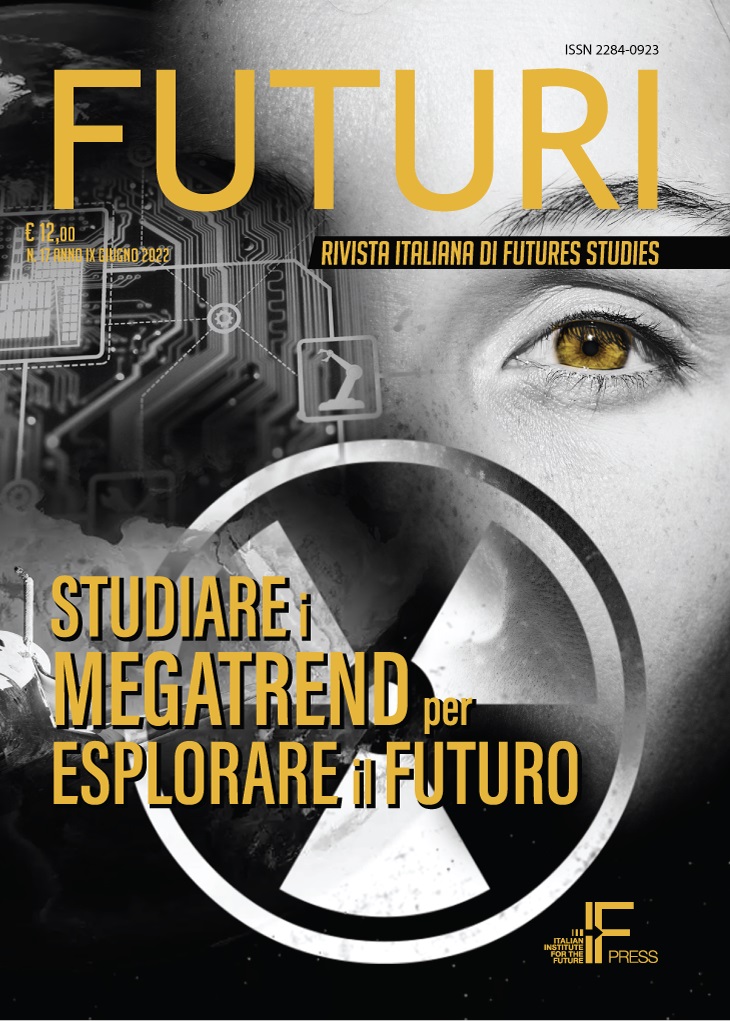No 17 (2022): Studiare i megatrend per esplorare il futuro
Issue Description
Forty years after the publication of "Megatrends", the best-seller by John Naisbitt (who died last year at the age of 92) in which this successful concept was first introduced, it can undoubtedly be said that megatrend analysis is now the indispensable basis of any study of the future, as its extension in large consulting groups as well as at the institutional level shows. Its usefulness lies in reducing uncertainty about the variability of ‘futures’ and thus limiting the probability range of certain scenarios. Today, however, it is increasingly evident how megatrend analysis can never remain an end in itself; in this Naisbitt was certainly a pioneer, because he realised that studying future dynamics was but the first step in a process of strategic transformation that had to involve companies, institutions and entire states. His consultancy work pushed precisely in this direction. Little, however, has been done in recent years: if today our knowledge of major trends is increasingly solid and precise, our ability to translate this knowledge into action is significantly reduced. In the era of ‘extended presentism’, we are as if paralysed: we see before us immense challenges that require determination to meet them - increasing zoonoses, climate change, an ageing population, technological unemployment - but we fail to act. It is around this problem that this issue of Futuri revolves.

